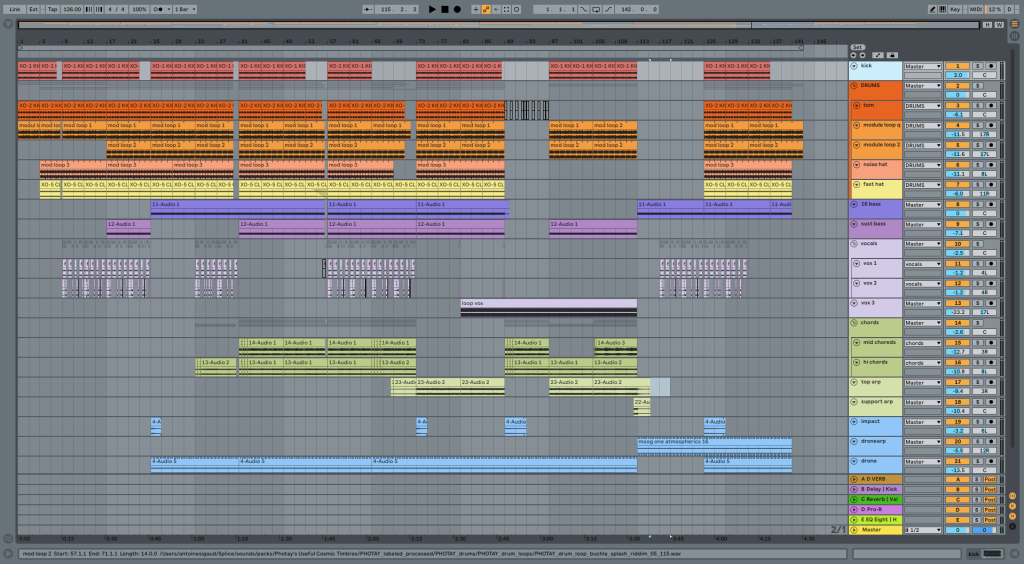Hardt Antoine has built a reputation as a DJ and producer who balances precision with emotion. The French-Jamaican artist and Fabric London resident returns to Kompakt with “Let Me Go,” a track that blends industrial percussion, hypnotic basslines, and the kind of emotional tension that defines the label’s peak-hour catalog. His background in both performance and production shows through in how controlled yet expressive the record feels.
With past releases on Innervisions, Crosstown Rebels, and TAU, Antoine has proven his ability to adapt while maintaining a sound that feels unmistakably his. The energy of “Let It Go” mirrors his approach behind the decks at Fabric, Circoloco, and Panorama Bar—tracks built for tension and release, moving between soulful restraint and mechanical drive. It’s the kind of record that fills the room without shouting for attention.
In this How It Was Made, Hardt Antoine opens up about the tools that brought “Let Me Go” to life. From the analog growl of the Moog Minitaur to the controlled chaos of the Korg MS-20 Mini and the precision of Ableton’s Clip Editor, he breaks down how each piece of gear fits into his creative process. What emerges is a look into the mindset of an artist who values texture, tone, and movement above all else.
Moog Minitaur
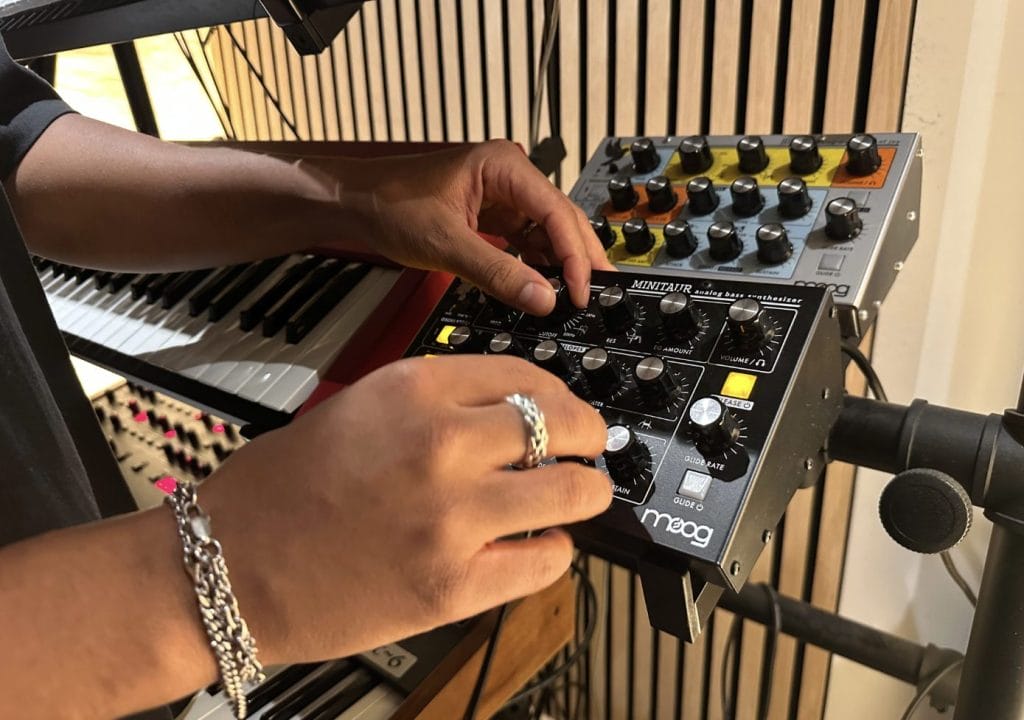
I think the first synth to talk about on this track is the Moog Minitaur. It’s a small, simple analogue mono synth that has all the classic Moog colours and that signature filter. I use it in a lot of my music.
The synth plays the arpeggiated one-note 16th bass line throughout the track. The filter is modulated by the LFO in a syncopated rhythm, with plenty of resonance to give it that ‘acid’ touch. I’ve added a ping-pong delay in Ableton to make the groove even more head-spinning.
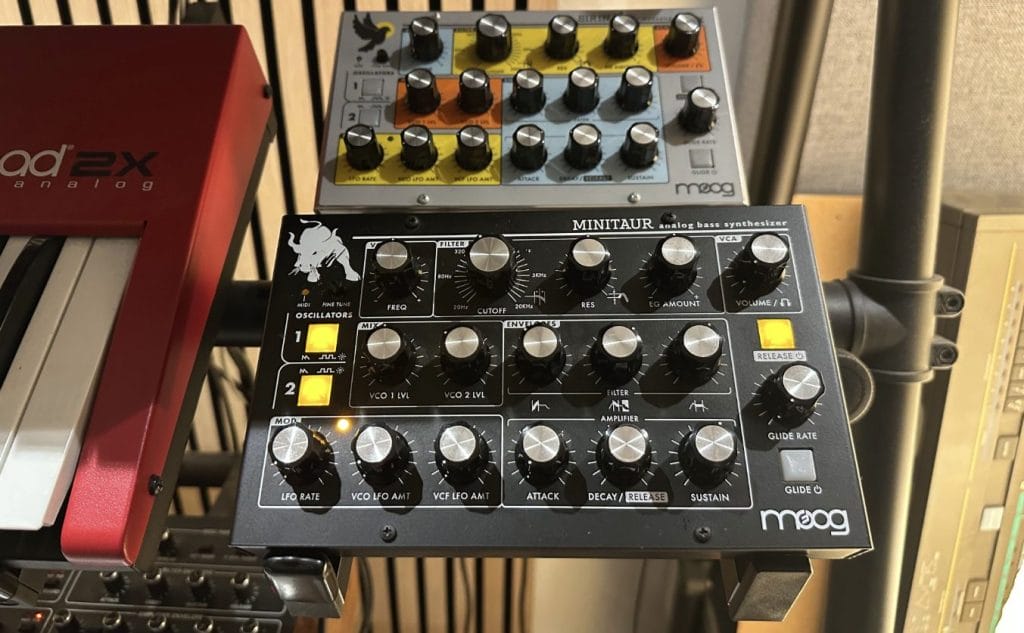
It’s the kind of sound I could throw together in a few seconds on the hardware, but would take much longer to set up in-the-box and routing the modulation properly could easily disrupt the creative flow.
One of the great things about modern Moog synths is how satisfying and musical they feel to play with by hand – opening and closing the filter or tweaking the decay to shape note lengths in that classic techno way. I didn’t do too much of that on this track though, as the patch already had plenty of movement.
Korg MS-20 Mini
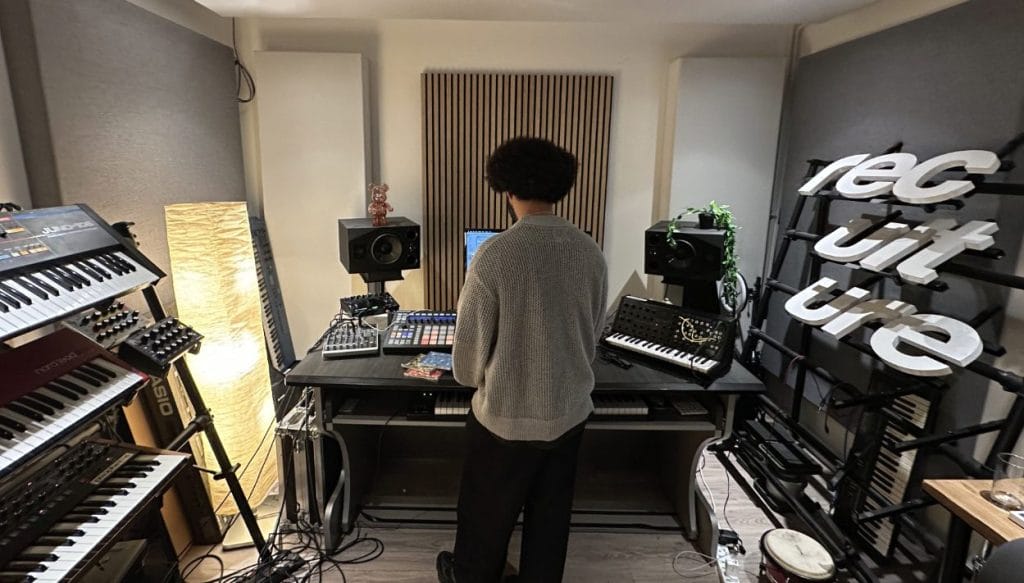
Another mono synth I absolutely love is the Korg MS-20 Mini. It’s a compact version of the Korg classic, with all the rich analogue colour of the original. It has some complex patching possibilities, but to be honest, I use it very simply to capture its amazing tone.
I used it here for the sustained bass: two detuned square waves playing the chord roots, while I recorded myself opening and closing the filter by hand throughout the track.
This synth has a crazy quality where it sounds absolutely huge but somehow still takes up very little space in the mix. Musically, it sat perfectly on top of the automated bass, alongside the kick and toms. With some simple EQ and light side-chaining, everything glued together seamlessly.
Nord lead
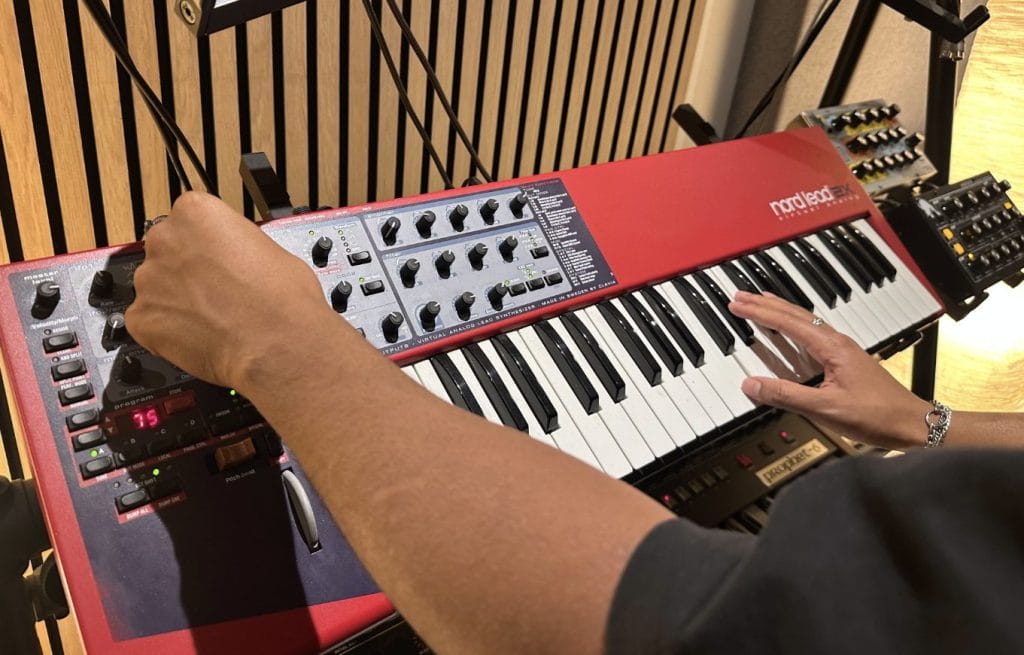
Next, I want to talk about the Nord Lead. I used it for the keys that come in during the second half of the track. This was my first synth, and I’ve always had a bit of a love-hate relationship with it as I’m not a huge fan of how the filter sounds. I usually keep it completely open with the resonance all the way down.
For this track, I sent MIDI from Ableton to the Nord through a pretty long MIDI chain. It included an arpeggiator playing chords, followed by three Max for Live ‘Note Modulator’ sequencers that expand the melody as the track grows. At the end of the chain, there is a MIDI Scale device keeping everything in key. Because this setup adds an element of randomness, I recorded both the generated MIDI sequence and the audio output from the synth.As I keep the filter open, it’s normally my go to for loud ‘in your face’ synth leads or to add an Electro touch or heavier Melodic moments.
Ableton Live Clip editor
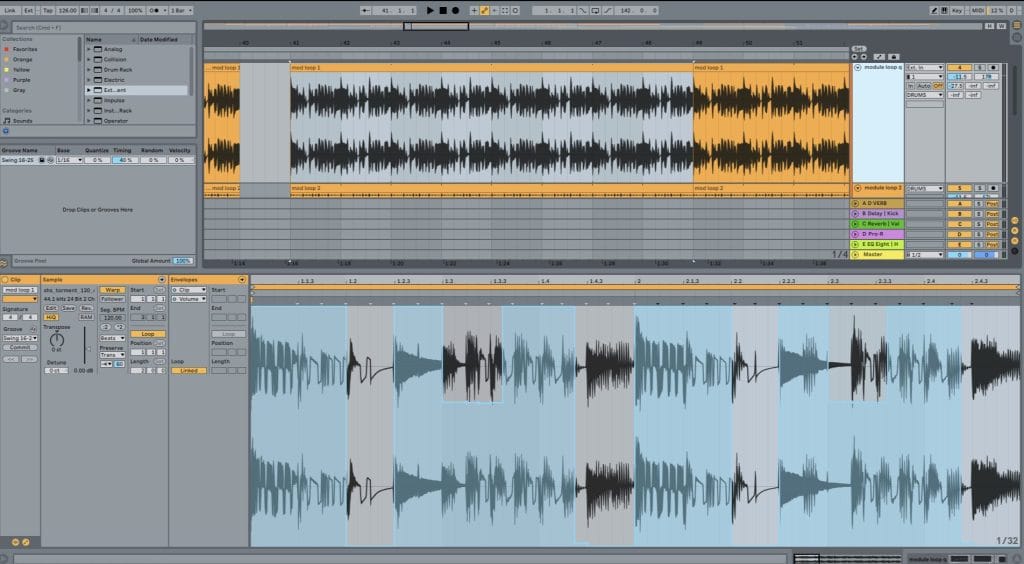
I actually want to talk about the Clip Editor within Ableton Live. It’s such a powerful tool, and I find it one of the most fun things to play with. There are so many features for doing complex, out-of-the-box audio editing seamlessly, and I feel like it can be underrated.
To make the drums in here, I used three loops: one of ‘organic’ drums with lots of reverb, one of delayed claves I recorded from another plugin (XLN Audio XO), and a third made from a loop of white noise glitches. I manipulated these using the transient ‘Preserve’ settings, tweaking the volume and transposition envelopes, and time-stretching the audio. This allowed me to carve space in each layer so the three loops blended into one coherent drum section.
I think a cornerstone of electronic music is creating unique, rich sound design.Sampling, re sampling and manipulating audio is a great tool to achieve this. Sometimes it takes a lot of time to get something musical that isn’t to basic, but I really love the workflow.
Hot Takes and Tips About Music
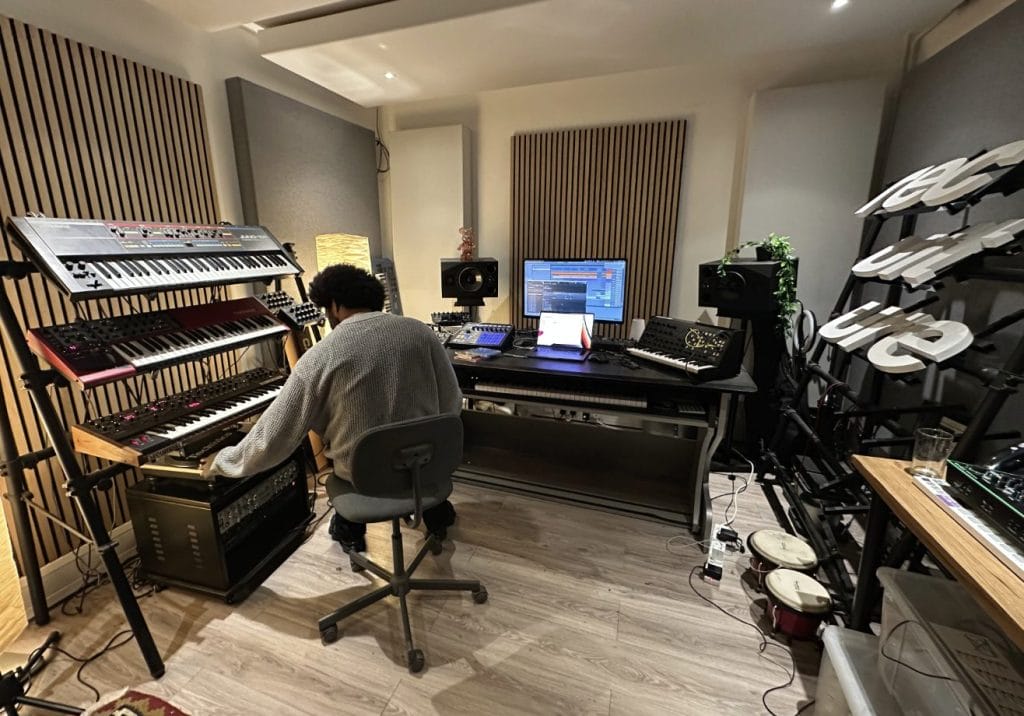
Hot Take #1:
I really love the electronic music industry but with all the Parties, Social Media hype and Glamour it’s easy to overlook some of the more introverted artist who make really great music. These guys are the blood of the scene and I’d like to see them get their moment.
Hot Take #2:
It’s easy to get lost in tech, plugins, skills and details and I think most producers do at some point. It’s essential to remember to have fun making music and often simplicity is the key.
Hot Take #3:
Right now and always producers should pay attention to music they love. Working in music it’s easy to get lost in listening to music for practice purposes – to analyse how things were made or find music for a DJ moment but it’s important to take time enjoy music simply as a fan.
Hot Take #4
Aquire gear and plugins slowly and take time to get to know each plugin or machine. Even the stock plugins can get very intricate and all the commercial DAWs have so much to play with from go.
Hot Take #5 (
I try not to overthink trends. Culture moves so quickly and rather than focusing on what is ‘current’ I’d rather keep an open mind creatively and let trend and culture be consumed subconsciously.
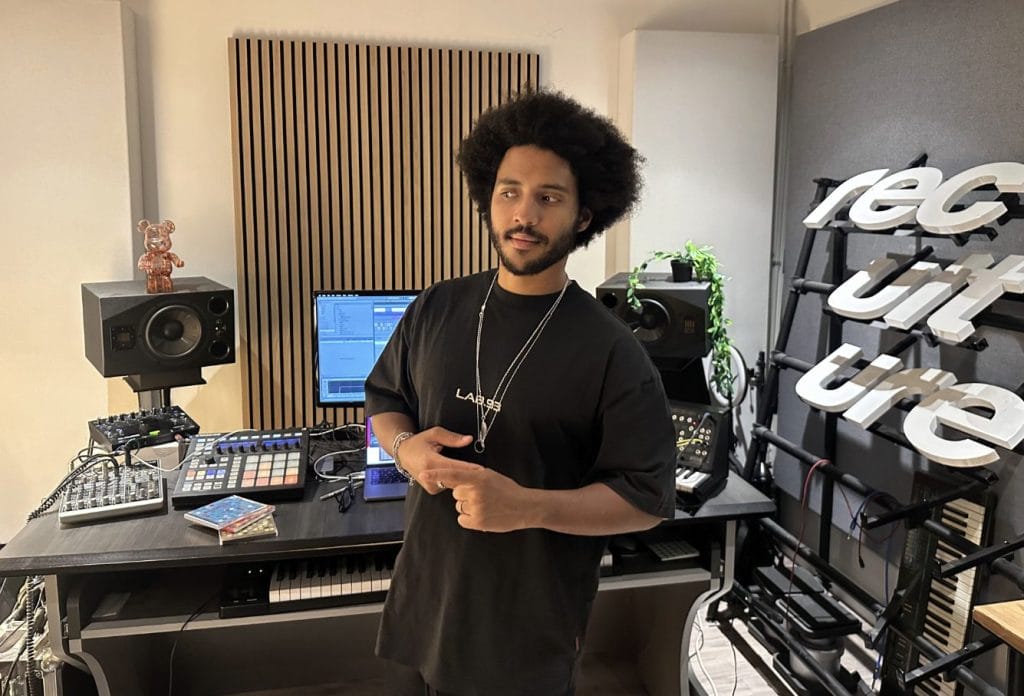
The post How It Was Made: Hardt Antoine – “Let Me Go” (Kompakt) appeared first on Magnetic Magazine.






